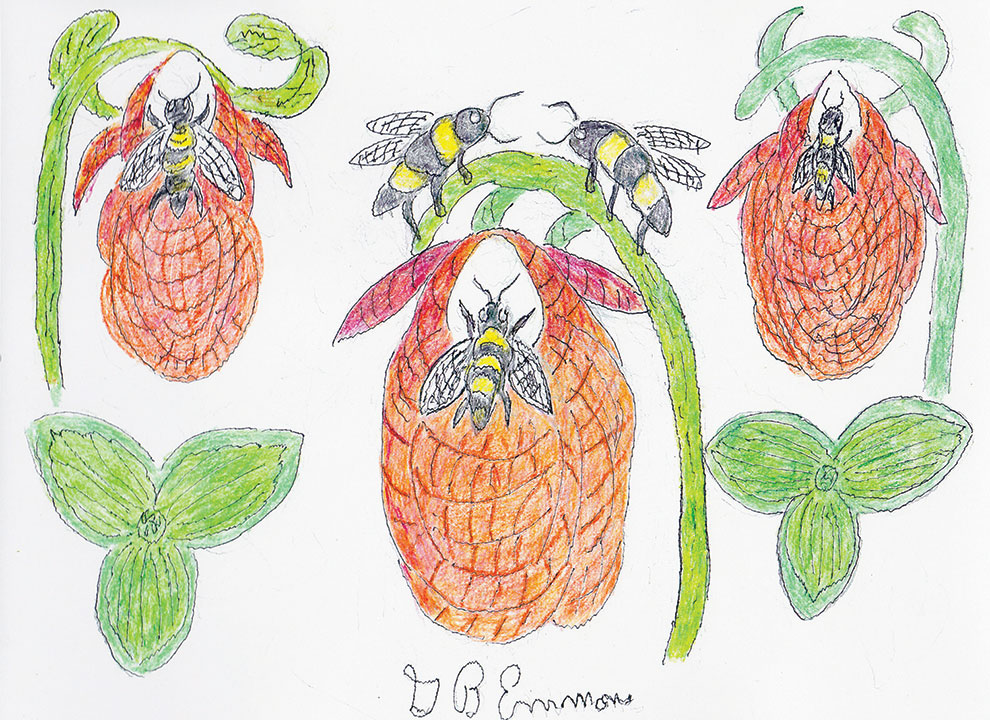Lady slipper orchids are decorative bulb-shaped flowers that range in color from white to various shades of pink and red in our gardens at this time of year. They are one of the most attractive and fascinating plants with a unique history of growth and development from a tiny seed blowing in the wind about the size of a dust particle. They are called dust particles until they get germinated with nutrition from an outside fungus source. The resulting activated fungus takes a full five years to mature and produce underground bulbs to form nutrient structures called “pelotons” that the orchid digests and grows into.
When they appear as an adult plant to bloom in early May, they become what botanists call “trap plants” to capture bumblebees looking for nectar and pollen as they found elsewhere in other flowers. However, the bees are deceived because they have to bring their own nectar with them. And after the bee forces its way through the opening at the front of the flower, as illustrated, the entrance door shuts behind it and the bees become trapped inside. It then must locate two escape windows over near the top of the flower and, in passing through it, scrapes off its back the pollination from a previous flower. As it exits, it also leaves a trace of male chemistry that germinates the entire process it left behind.
Bumblebee populations are not what they used to be; through the experience just described, the bees learn to avoid getting trapped. Contrary to popular belief, lady slippers are still not endangered, and orchids are still the largest plant family in the world. The State of Massachusetts does not allow picking them for sale or to transplant them, so they cannot legally be purchased to beautify your floral assortment in most gardens. They sometimes are dug up for commercial use out of a mixed hard wood coniferous forest of pine and hemlock or a well-drained deciduous forest soil.
Still, their appearance in your flower garden is the combined miracle of intricate plant growth, as well as a remarkable pollination by bumblebees forced upon them by Mother Nature’s scheme to reproduce her beloved lady slipper orchids.
By George B. Emmons
